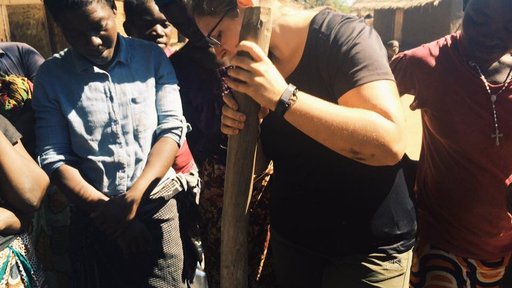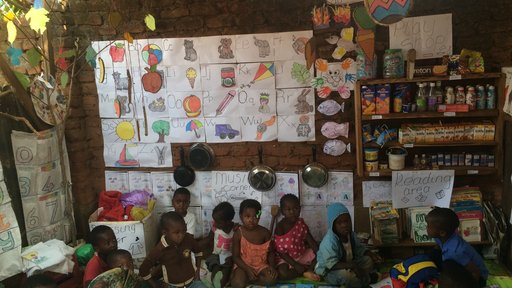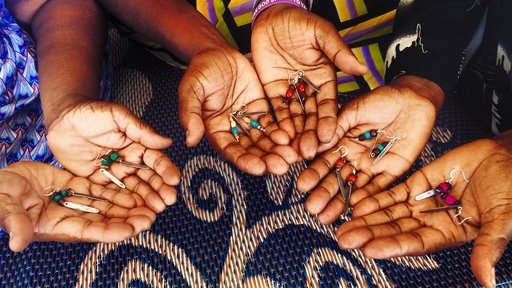Is There A Peace Corps For Animals
My transition from Peace Corps to Peace Corps Response felt natural.
Equally a Peace Corps Volunteer, I worked with a small wildlife reserve in cardinal Malawi. A large part of my task was to assist develop solutions to issues in the area, including the relationship betwixt the park and its 12 border communities.
I loved information technology. It was my dream come up true to work in a wildlife reserve in sub-Saharan Africa. But I had, admittedly, romanticized the idea and did not anticipate the difficulties that came with working in wild fauna conservation at the footing level. I came to know those realities.

I learned from my counterparts at the park who had seen poaching immediate and had been the victims of retaliation. I likewise learned from my neighbors who were doing the poaching. I listened every bit they told me why, when they knew it was wrong and that they were risking imprisonment, they felt they had no culling.
Together with my community outreach counterpart, we cycled around to the border communities to teach new skills that could deter wildlife offense from being committed. Because our park suffered from an abundance of wood poaching, we focused on projects like briquette-making (a fuel alternative using natural and locally bachelor materials) and improved cookstoves, educated nigh conservation and nurtured a human relationship between the park and communities that was anchored by communication, trust and respect.
Local leaders, similar my former counterpart, continue to teach programs effectually the communities. They are doing their best to keep the work live.
That biological reserve was connected to a conservation organization called the Lilongwe Wildlife Trust (LWT). The LWT works throughout Malawi in the areas of wildlife research, welfare and rescue, law enforcement, and conservation education and advancement. When an opportunity came upward, I was able to secure a position as National Education Coordinator through Peace Corps Response, thus continuing on and growing in the field that is my passion.

In Lilongwe, life is different. Before, I was living in a brick hut with no electricity in triple-digit temperatures. At present, I live in a duplex with a toilet, stove and fan. The work is more fast-paced and intense, and the team is much larger. But at its centre, the piece of work is much the same.
Our conservation education team works with a women'due south group that makes and sells briquettes every week. Nosotros've delivered seven unlike conservation educational activity modules to well-nigh 400 schools around the state, including those surrounding the wildlife reserve where I was based. We also work with law enforcement and community groups to do sensitization trainings and workshops that help combat trafficking, bush-league meat and deforestation.
One of my personal successes has been the introduction of the Perivoli Schools Trust, which helps nursery schoolhouse teachers restructure their classrooms and curriculum using waste and naturally bachelor materials, utilizing play every bit the virtually important component. The eight-module programme teaches skills like creating books from old calendars and instruments from old cans and seeds, visual timetables and activity corners. We began in Lilongwe in January 2017 with three trainers and have graduated 80 teachers thus far. This month, nosotros'll add 10 more trainers and 250 more teachers to the programme.

I've too been able to stretch my artistic wings past making jewelry from recycled snare wire. The wire, used to trap animals, is confiscated from parks. Once in Lilongwe, it's hammered apartment or spiraled, and together with my landlady's retired women'due south group, we make earrings and bracelets to sell. All the proceeds go in back up of LWT's Wildlife Emergency Response Unit, which works around the state to protect Malawi's wildlife.
By chasing my wildest dream, I was able to turn information technology into reality. I'k able to work in a field that I love and am passionate about, and the Peace Corps has supported me every step of the way. Choosing to stay a 3rd twelvemonth has opened and then many doors and has created opportunities that I could never take idea possible. It will be a function of my life forever and I could not exist more grateful for the lessons and love that I've experienced in Republic of malaŵi.
Source: https://www.peacecorps.gov/stories/wildest-dream-reality/
Posted by: carterwasat1981.blogspot.com

0 Response to "Is There A Peace Corps For Animals"
Post a Comment